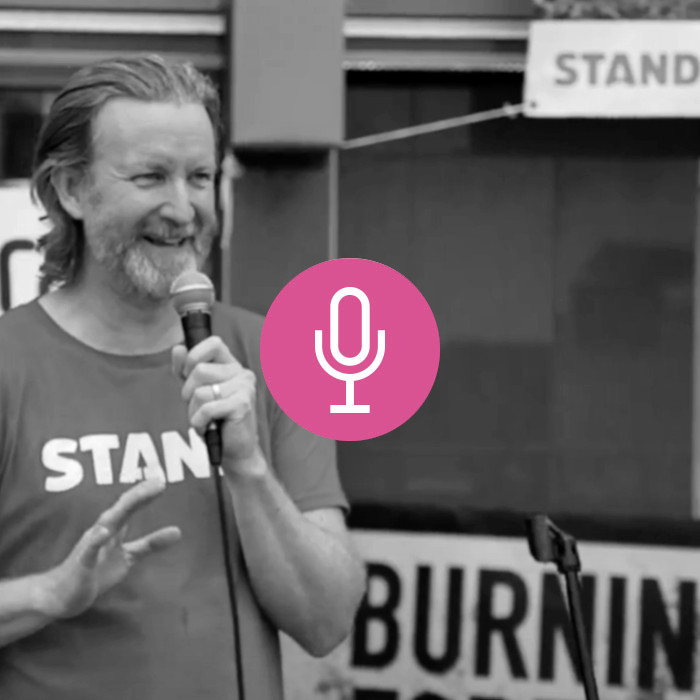Table of Contents
Maps
The Environmental Paper Network has been mapping bioenergy plants across Europe by type and capacity here. A report summarising the global situation (2017 data) can be found here.
Ember’s 2019 map identifies the many coal power plants across Europe with plans to switch to biomass burning.You can see a map of the global supply chain for wood pellets here.
In 2018, Chatham House published a detailed report into the demand for woody biomass in the EU, focusing on nine of the largest EU consumers: Denmark, Finland, France, Germany, Italy, Poland, Romania, Sweden and the UK.
Major interventions from scientists
In 2009, an article in the journal Science by Timothy Searchinger et al, identified a ‘major, but fixable, carbon accounting flaw in assessing bioenergy’ in the Kyoto Protocol and national climate legislation. ‘This accounting erroneously treats all bioenergy as carbon neutral, regardless of the source of the biomass, which may cause large differences in net emissions. For example, the clearing of long-established forests to burn wood or to grow energy crops is counted as a 100% reduction in energy emissions, despite its causing large releases of carbon.’
In 2011, former IPCC lead author, Professor Bill Moomaw, wrote his warning letter to policymakers, “The Myth of Carbon Neutrality of Biomass”.
In January 2018, as the EU was reassessing the renewable energy directive which had led to a huge increase in the amount of wood being burned for energy, a group of 772 scientists wrote a letter to MEPs, as the European Parliament scrutinised the sustainability criteria for bioenergy as part of the EU’s recast Renewable Energy Directive. The list was headed by Professor John Beddington, former Chief Scientist to the UK government. When the Renewable Energy Directive passed the European Parliament in 2018, Tim Searchinger and a number of other leading scientists published a critical commentary in Nature Communications. They concluded that:
“Overall, replacing fossil fuels with wood will likely result in 2-3x more carbon in the atmosphere in 2050 per gigajoule of final energy.”
Dr Mary Booth’s paper in Environmental Research Letters (“Not carbon neutral: Assessing the net emissions impact of residues burned for bioenergy”) can be accessed here. Details of the case that Booth and others brought against the EU’s Renewable Energy Directive in 2020 can be found here. The accompanying report, “Paper Tiger”, can be read here.
In September 2019, the European Academies Science Advisory Council (EASAC), which includes the national science academies of 18 European countries, published a landmark paper arguing that ‘Serious mismatches continue between science and policy in forest bioenergy’. This was on top of a 2018 commentary on “Forest Bioenergy and Carbon Neutrality”. Ahead of the COP25 meeting in Madrid in December 2019, EASAC scientists issued a further statement to policymakers: ‘We have repeatedly pointed out that in many cases the large-scale substitution of coal by forest biomass will accelerate climate warming.’ In May 2020, EASAC issued a further statement in response to complaints by a body representing the bioenergy industry. And in August 2020, EASAC issued a recommendation to the European Commission that biomass burning be included in the EU ETS (Emissions Trading System).
In 2018, Forest Research, the UK’s principal organization for forestry and tree related research published a supplementary analysis based on research complied for the European Commission: “Carbon impacts of biomass consumed in the EU”. The report modelled several scenarios for the EU. The authors stated that:
‘Unless appropriate policy measures are taken to support sustainable bioenergy supply (in terms of impacts on GHG emissions), particularly in the case of forest bioenergy supply, a significant increase in bioenergy use in the EU is likely to lead to a net increase, rather than decrease, in GHG emissions being contributed from bioenergy sources.’
In 2017, Chatham House, in the UK, published a series research papers on Woody Biomass for Power and Heat: Impacts on the Global Climate. The reports highlighted the dangers of expanding wood burning in Europe and pointed out the flaws in assuming that forest bioenergy is carbon neutral: ‘Replacing large mature trees, with plentiful leaf cover absorbing large volumes of carbon dioxide, with small young ones mean that the rate of carbon uptake will be far lower for years’. You can read a blog by the author, Duncan Brack, here. You can watch a debate on the findings on the UK’s Channel 4 News.
In January 2020, Chatham House also published a briefing paper and video on Bioenergy and Carbon Capture and Storage (BECCS). The paper found that “the deployment of BECCS at the scales assumed in most models would consume land on a scale comparable to half that currently taken up by global cropland”. This chimes with warnings from researchers at Imperial Collage London in January 2019 that “policy makers should be sceptical about a future that is uniquely or heavily reliant on BECCS”.
Coal-to-Clean think tank Ember (formally Sandbag) has produced two reports into forest bioenergy since December 2019. “Playing with Fire”, which examines the threat of coal-to-biomass switching and found manifold plans from coal-plant owners in Europe, can be found here. Approximately 2,700km2 of forest would need to be cut down every year to feed this new demand if coal power plants are converted to burn biomass on this scale.
Ember’s second report, “The Burning Question”, which calculates the loss of revenue to the UK government from not applying a carbon price to UK biomass burning can be found here. UK taxpayers have committed in excess of £13 billion to large-scale biomass burning up to 2027, the report finds.
In 2017, the World Resources Institute published a blog on “Why Burning Trees for Energy Harms the Climate”
Official Publications
Intergovernmental Panel on Climate Change (IPCC)
- Intergovernmental Panel on Climate Change (2006). “Table 2,” Guidelines for National Greenhouse Gas Inventories, Vol. 2 (Energy), pp 2.16-2.17. Available online at: https://tinyurl.com/wbprapcpublic/2006gl/vol2.html
- Verbruggen, A., W. Moomaw, J. Nyboer, 2011: Annex I: Glossary, Acronyms, Chemical Symbols and Prefixes. In IPCC Special Report on Renewable Energy Sources and Climate Change Mitigation. P.958 – hyperlink
Forest Research
(2018) – Clarification report for the European Climate Foundation, based on research for the European Commission. “Carbon Impacts of Biomass consumed in the EU”.
UK Committee on Climate Change
- January 2020 – Land use: Policies for a Net Zero UK
- May 2019 – Net Zero Technical Report
- November 2018 – Biomass in a low-carbon economy
- December 2018 – Bioenergy Call for Evidence report
- December 2018 – Steps to scaling up UK sustainable bioenergy supply (technical annex)
- December 2018 – What next for bioenergy? (technical annex)
European Academies Science Advisory Council (EASAC)
May 2017 – Multi-functionality and Sustainability in the European Union’s Forests
Netherlands Environmental Assessment Agency (PBL)
July 2020 – Availability and applications of sustainable biomass (English)
Landmark study by the Dutch Environment Agency based on plans by the Netherlands government to develop a “widely supported sustainability framework for biomass”. To this end, the Ministry of Infrastructure and Water Management asked the advice of the Social and Economic Council of the Netherlands (SER). In this context, PBL was asked to provide an estimate of the availability and optimal use of sustainable biomass for the Netherlands. The study called into question the viability and sustainability of biomass imports into the Netherlands.
You can read a response to the PBL study by Tim Searchinger, Michael Norton, Mary Booth and William Moomaw here.
A 2020 short film by the US publication Mongabay
Technical papers and peer reviewed articles
Biomass policy and carbon emissions
- Searchinger, T.D. et al. “Fixing a Critical Climate Accounting Error”, Science 23 OCT 2009: DOI: 10.1126/science.1178797
- Searchinger, T.D., Beringer, T., Holtsmark, B. et al. Europe’s renewable energy directive poised to harm global forests. Nature Communications 9, 3741 (2018). https://doi.org/10.1038/s41467-018-06175-4
- Norton, M, Baldi, A, Buda, V, et al. Serious mismatches continue between science and policy in forest bioenergy. GCB Bioenergy. 2019; 11: 1256– 1263. https://doi.org/10.1111/gcbb.12643
- Carmenza Robledo‐Abad et al, “Bioenergy production and sustainable development: science base for policymaking remains limited” GCB Bioenergy, 2016, 9:3: https://doi.org/10.1111/gcbb.12338
- Walter V. Reid, Mariam K. Ali, Christopher B. Field, “The future of bioenergy” Global Change Biology (23 October 2019) https://doi.org/10.1111/gcb.14883
- Mary S Booth “Not carbon neutral: Assessing the net emissions impact of residues burned for bioenergy”, 2018 Environ. Res. Lett. 13 035001: https://doi.org/10.1088/1748-9326/aaac88
- Bernier, P., and D. Pare. 2012. “Using Ecosystem CO2 Measurements to Estimate the Timing and Magnitude of Greenhouse Gas Mitigation Potential of Forest Bioenergy.” Global Change Biology Bioenergy 5 (1): 67–72.
- Holtsmark, B. 2012. “Harvesting in Boreal Forests and the Biofuel Carbon Debt.” Climatic Change 112 (2): 415–28.
- Hudiburg, T. et al. 2011. “Regional Carbon Dioxide Implications of Forest Bioenergy Production.” Nature Climate Change 1: 419–-23.
- McKechnie, J. et al. 2011. “Forest Bioenergy or Forest Carbon? Assessing Trade-offs in Greenhouse Gas Mitigation with Wood-based Fuels.” Environmental Science & Technology 45: 789–95.
- Mitchell, S.R. et al. 2012. “Forest Debt and Carbon Sequestration Parity in Forest Bioenergy Production.” Global Change Biology Bioenergy 4 (6): 818–27.
- Stephenson, A., and D. MacKay. 2014. “Life Cycle Impacts of Biomass Electricity in 2020.” London: UK Department of Energy & Climate Change.
- Walker, T. et al. 2010. “Biomass Sustainability and Carbon Policy Study.” Brunswick, ME: Manomet Center for Conservation Sciences.
- Zanchi, G.A. et al. 2012. “Is Woody Bioenergy Carbon Neutral? A Comparative Assessment of Emissions from Consumption of Woody Bioenergy and Fossil Fuel.” Global Change Biology Bioenergy 4 (6): 761–72.
Biomass subsidies and support frameworks
- Manjola Banja et al, “Biomass for energy in the EU – The support framework” Energy Policy Volume 131, August 2019: https://doi.org/10.1016/j.enpol.2019.04.038
Tree growth and forest carbon sequestration
- Anand M Osuri et al 2020 “Greater stability of carbon capture in species-rich natural forests compared to species-poor plantations” Environ. Res. Lett. 15 034011: https://doi.org/10.1088/1748-9326/ab5f75
- Lewis et al “Restoring natural forests is the best way to remove atmospheric carbon” Nature 568, 25-28 (2019): doi:10.1038/d41586-019-01026-8
- Jean-Francois Bastin, Yelena Finegold, Claude Garcia, Danilo Mollicone, Marcelo Rezende, Devin Routh, Constantin M. Zohner, Thomas W. Crowther, “The global tree restoration potential”, Science, 05 Jul 2019: 76-79: DOI: 10.1126/science.aax0848
- Bernal, B., Murray, L.T. & Pearson, T.R.H. Global carbon dioxide removal rates from forest landscape restoration activities. Carbon Balance Manage 13, 22 (2018). https://doi.org/10.1186/s13021-018-0110-8
- Stephenson, N., Das, A., Condit, R. et al. Rate of tree carbon accumulation increases continuously with tree size. Nature 507, 90–93 (2014). https://doi.org/10.1038/nature12914
Greenhouse gas recovery and BECCS
- Greenhouse Gas Removal Royal Society, September 2018: https://royalsociety.org/topics-policy/projects/greenhouse-gas-removal/
- Mathilde Fajardy, Dr. Alexandre Köberle, Dr. Niall Mac Dowell, Dr. Andrea Fantuzzi, “BECCS deployment: a reality check”, Grantham Institute Briefing paper No 28, January 2019: https://bit.ly/3c07QEi
A short video released by Chatham House in 2020, explaining the problems with Bioenergy with Carbon Capture and Storage (BECCS).
Briefings from NGOs and think tanks
Over 120 civil society groups have signed the “biomass delusion statement” – pointing out the huge flaws in forest bioenergy as a solution to climate change and biodiversity loss.
North America
Sasha Stanwick’s blogs and policy papers for the Natural Resources Defence Council (NRDC) can be found here. NRDC’s November 2019 research into how EU clean energy is causing forest destruction in North America can be found here. NRDC’s 2018 modelling with Vivid Economics, explaining why biomass burning is not necessary for energy supply can be found here.
US NGO Dogwood Alliance has done a lot of work on the ground in the South of the USA to document the unsustainable harvesting of trees for energy exports. Their work on biomass can be found here.
Dr Mary Booth’s research and writing can be found at the Partnership for Policy Integrity. Details on the case brought against the EU’s Renewable Energy Directive by PPI and others can be found here.
The Southern Environmental Law Center’s work on forest bioenergy – including details studies into the wood pellets sourced in the US South and shipped to Drax power plant in the UK – can be found here: “Biomass Energy in the South”.
Spatial Infographics Group (2019) has done a lot of detailed work into the US supply chains that Drax Group uses to supply their power plant in the UK. They found that it would take plant regrowth nearly 40 years to reabsorb the CO2 emitted in a single year from Drax’s biomass burning from the South Eastern USA. The full report can be found here: https://bit.ly/3cYdIgc – A (4-page) fact sheet based on the report is here: https://bit.ly/39tYKgz
A 2020 investigation from the Canadian and US NGO Stand.earth on how forest biomass policy is threating caribou habitats in Canada can be found here.
Europe
European Forest NGO Fern’s work on bioenergy can be found here. Fern’s briefing on the “6 problems with Bioenergy with Carbon Capture and Storage” can be accessed here.
NGO Biofuelwatch has compiled detailed explainers and news items on biofuels policy for a number of years. Their site also includes links to Europe-wide campaigns.
Birdlife’s work on bioenergy can be found here. Transport & Environment’s work on biofuels can be found here. EU Bioenergy is jointly run by the NGOs Birdlife and Transport & Environment – and covers developments in EU policy towards all kinds of bioenergy.
A 2017 WWF briefing paper on EU Bioenergy Policy can be found here.
A 2012 briefing paper on Bioenergy from the Royal Society for the Protection of Birds (RSPB) can be found here.
A 2020 report by the British conservative think tank Bright Blue which recommends the phasing out of all UK subsidies to biomass can be found here
A 2019 report from the shareholder action group ShareAction “The Biomass Blindspot”, which contains recommendations to investors, can be found here.
The RSPB’s 2020 article on “Nature as a Solution” can be found here.
“Biomassive Clear-Cut” is a not-for-profit film released in February 2020 by the Tropism Art & Science Foundation, looking at deforestation by the Dutch State Forest Administration.




